Exploring the Most Popular Food in Chinese Culture
Chinese culture is rich and diverse, and food plays a central role in its traditions and social practices. When we discuss the most popular food in Chinese culture, one dish stands out above the rest: rice. This staple food has been a key element in Chinese cuisine for centuries, representing not only nourishment but also culture and tradition.
Rice: The Heart of Chinese Cuisine
Rice has been cultivated in China for over 10,000 years. It is often served alongside many dishes, acting as a base that complements various flavors. Rice is appreciated not just for its taste but also for its symbolic meaning; it’s a sign of prosperity and sustenance. In fact, the phrase “to eat” (吃, chī) in Chinese is often associated with rice, highlighting its importance in daily meals.
Diverse Preparations of Rice
Chinese cuisine boasts multiple ways to prepare and serve rice:
- Steamed Rice: The simplest form and often the most common. It is fluffy and pairs well with nearly any main dish.
- Fried Rice: A popular dish made with leftover rice. It includes a mix of vegetables, meats, and often a dash of soy sauce.
- Porridge: Known as “congee”, this rice dish is often enjoyed for breakfast and can be sweet or savory.
Meat and Vegetables: Key Accompaniments
While rice might be the star, various proteins and vegetables work to create a balanced meal. Popular meat options include:
- Pork: Often marinated in soy sauce, garlic, and sugar, pork dishes like sweet and sour pork or char siu (BBQ pork) are beloved.
- Chicken: Stir-fried chicken with vegetables is easy to find in households and restaurants alike.
- Beef: Dishes like beef stir-fry are popular, showcasing the protein’s tender qualities when cooked quickly over high heat.
Vegetables also play a crucial role, with staples including bok choy, broccoli, and various mushrooms, which provide color, texture, and nutrition.
Dim Sum: The Joy of Sharing
Beyond staples, dim sum represents a unique aspect of Chinese dining. This collection of small dishes, including dumplings, buns, and pastries, is often enjoyed during brunch. It’s not just a meal; it’s an experience. Dim sum is typically served with tea, encouraging social interaction as diners share different dishes. The various dim sum options allow for a communal atmosphere and highlight the variety available in Chinese cuisine.
Regional Variations of Chinese Food
China is vast, and its regions vary greatly in culinary traditions. Here are some regional highlights:
- Sichuan Cuisine: Known for its bold flavors and spiciness, featuring ingredients like chili peppers and Sichuan peppercorns.
- Cantonese Cuisine: Famous for its fresh seafood and lightly seasoned dishes, focusing on the natural flavors of ingredients.
- Shandong Cuisine: Recognized for its emphasis on seafood and soups, with a focus on using fresh, high-quality ingredients.
Linking Food to Culture
Food in Chinese culture is often linked with symbolism and tradition. Various dishes are prepared during festivals to enhance good fortune, health, and prosperity for the new year. Examples include:
| Festival | Food | Symbolism |
|---|---|---|
| Chinese New Year | Dumplings | Wealth and prosperity |
| Mid-Autumn Festival | Mooncakes | Reunion and harmony |
Rice holds the title as the most popular food in Chinese culture, but the culinary landscape is vast, colorful, and rich in traditions. Whether you savor the delicate flavors of dim sum or indulge in a hearty bowl of fried rice, you are partaking in a rich cultural history that spans thousands of years.
For more interesting insights into Chinese cuisine, visit China Highlights or discover recipes at Chinese Food Road.
The Influence of Geography on Chinese Cuisine
China’s vast and varied geography plays a crucial role in shaping its rich culinary landscape. From the towering mountains to sprawling plains and fertile river valleys, each region has its unique flavors, ingredients, and cooking techniques. Understanding how geography influences Chinese cuisine reveals not only the diversity of its food but also the cultural significance behind it.
Regional Distinctions in Chinese Cuisine
China is divided into several culinary regions, each with distinct characteristics influenced by local geography. The primary regions are:
- Cantonese Cuisine: Found in Guangdong province, this cuisine showcases light flavors and fresh ingredients, heavily utilizing seafood. The proximity to the South China Sea contributes to a bounty of fish and shellfish dishes.
- Sichuan Cuisine: Known for its bold, spicy flavors, Sichuan cuisine benefits from the region’s rich agriculture. The fertile plains and rivers provide ample opportunities to grow chili peppers, garlic, and spices, creating a unique flavor profile.
- Huaiyang Cuisine: Originating from the Yangtze River delta, this cuisine is characterized by its refined techniques and emphasis on the natural taste of the ingredients. The fertile soil along the river supports an abundance of vegetables and fish.
- Shandong Cuisine: This northern style is noted for its use of grains and seafood. The Bohai Sea offers a variety of fresh seafood, while the plains around the region cultivate wheat, which is often used in dumplings and noodles.
- Northwestern Cuisine: This area, comprising Xian and surrounding regions, uses grains like millet and wheat. The geography influences the heavy use of lamb and beef due to the pastoral lifestyle.
The Role of Climate
The climate across China varies greatly from north to south. This variation impacts the types of crops that can be grown, subsequently influencing dietary preferences. For example:
| Region | Climate | Key Ingredients |
|---|---|---|
| North | Harsh winters, hot summers | Wheat, corn, and preserved vegetables |
| South | Mild winters, warm and humid summers | Rice, tropical fruits, and fresh vegetables |
In northern China, the colder climate makes it ideal for growing hardy grains like wheat. Dishes like hand-pulled noodles and dumplings are staples. Conversely, southern regions, with their warmer and wetter climates, favor rice as a primary grain. The use of rice leads to dishes like stir-fried rice and rice cakes. You can explore more about regional differences in Chinese cuisine on ChinaChef.
Local Ingredients and Specialties
The diversity of ingredients available in each region also contributes to local specialties. For example:
- In Sichuan, dishes such as *Mapo Tofu* reflect the use of locally grown chili peppers and Sichuan peppercorns, which are known for their unique numbing sensation.
- Cantonese dim sum showcases fresh seafood and delicate flavors, highlighting the region’s access to the abundant South China Sea.
- In the Inner Mongolia region, lamb dishes take center stage due to the pastoral lifestyle suited to the grassy plains.
Cultural Significance of Geographic Influences
The geographical influence on cuisine extends beyond just ingredients; it also connects to cultural heritage. Each dish tells a story about the people, their environment, and their traditions. For example, during festivals, certain dishes are prepared to signify prosperity and happiness, often linked to the agricultural calendar in specific regions.
In Chinese culture, food is not just nourishment; it plays a vital role in family and social gatherings. Exploring these culinary paths can deepen one’s appreciation for China’s diverse culture and history. To dive deeper into this cultural tapestry, visit China Culture.
The influence of geography on Chinese cuisine is profound and multifaceted. The combination of regional ingredients, climate, and cultural heritage creates a dynamic culinary landscape that reflects the heart and soul of China. Traveling through the vast reaches of this country can be a delicious adventure for anyone eager to taste the variety of flavors cultivated across its diverse geographic regions.
Celebrating Festivals with Traditional Chinese Dishes
Festivals in China are a time of joy, gathering, and celebration, often marked by traditional dishes that bring families together. Each festival has its unique significance, and the food served during these occasions plays an essential role in honoring traditions and celebrating the culture.
Chinese New Year
Chinese New Year, the most important festival in China, is celebrated with family reunions and special meals. One of the most popular traditional dishes is Dumplings (Jiaozi). These are shaped like ancient coins, symbolizing wealth and prosperity. Eating dumplings during this time is believed to bring good luck for the coming year.
Another festive dish is Nian Gao, a sticky rice cake that signifies growth and progress. Families often serve a round cake, highlighting the completeness of family togetherness. Fish is also a common dish, as its Chinese word ‘yu’ sounds like ‘surplus,’ symbolizing abundance.
Lantern Festival
The Lantern Festival marks the end of the Chinese New Year celebrations. During this festival, Yuan Xiao (glutinous rice balls) are typically served. These sweet balls are filled with different fillings like sesame or red bean paste, representing family unity and togetherness.
Mid-Autumn Festival
The Mid-Autumn Festival celebrates the harvest and family reunion. Mooncakes are the star of this festival, symbolizing completeness and reunion. These round pastries are often filled with lotus seed paste or red bean paste, and they are shared among family members as a gesture of unity.
During this festival, people also enjoy Osmanthus-scented rice cakes, which are made from glutinous rice and sweet osmanthus flowers, symbolizing sweetness and harmony in relationships.
Dragon Boat Festival
Celebrated in honor of the poet Qu Yuan, the Dragon Boat Festival is famous for its specialty dish, Zongzi. These are glutinous rice dumplings wrapped in bamboo leaves, often filled with meats or sweet fillings. Eating zongzi is a way to remember Qu Yuan’s spirit and his devotion to his country.
Another traditional food during this festival is Realgar wine, believed to ward off evil spirits, symbolizing protection and safety for families.
Qingming Festival
During the Qingming Festival, or Tomb Sweeping Day, families honor their ancestors. One of the traditional foods enjoyed is Qingtuan, a green riceball made with mugwort and glutinous rice, symbolizing the beginning of spring and new life.
Other Notable Dishes
- Sweet Rice Dumplings: Commonly served during various festivals, symbolizing sweetness in life.
- Steamed Buns (Baozi): These are often filled with pork or vegetables and signify prosperity.
- Long Noodles: Served during birthdays or celebrations, representing long life.
Food during these festivals is not just about flavor but about maintaining cultural heritage and family bonds. Each dish tells a story, reflecting the values and traditions that have been passed down through generations.
Traditional Chinese food can be enjoyed by everyone, whether you’re embracing the culture or simply enjoying a meal with family. To dive deeper into traditional Chinese dishes celebrated during festivals, check out resources like China Highlights for comprehensive information.
Engaging with Chinese festivals through food is a rich experience that bonds families and preserves culture. Whether it’s the flavorful dumplings of the New Year or the sweet mooncakes of the Mid-Autumn Festival, each dish offers a taste of tradition and heritage.
The Role of Family Style Dining in Chinese Society
In Chinese culture, family style dining holds a special place not only in meals but also in social interaction and relationship building. This dining style promotes togetherness, sharing, and communal bonding, reflecting the cultural values deeply embedded in Chinese society. The significance of sharing food is not merely about nourishment; it encapsulates respect, hospitality, and love among family members and friends.
At the heart of family style dining is the principle of sharing. Typically, food is served in large, communal bowls or platters, allowing everyone at the table to take a portion of various dishes. This approach emphasizes the idea of unity among diners. Whether it’s a joyous occasion or a regular family gathering, the act of sharing meals creates memories and strengthens familial bonds.
Here are some key components that illustrate the role of family style dining in Chinese society:
- Symbol of Harmony: Sharing a meal is often seen as a way to exhibit harmony within the family. Chinese culture places a high value on maintaining peace and unity, and dining together symbolizes this ideal.
- Culinary Variety: A typical family style meal includes a delightful assortment of dishes that reflect regional flavors and preferences. From spicy Sichuan dishes to Cantonese dim sum, the variety showcases the country’s rich culinary landscape.
- Encouragement of Communication: Family style dining facilitates dialogue and interaction. As family members share stories and laughter over food, it reinforces connectivity and strengthens relationships.
- Respect for Elders: In many Chinese families, elderly members are often served first, embodying the respect accorded to them. This custom underscores the importance of honor and gratitude within the familial hierarchy.
- Tradition and Ritual: Many families observe specific customs during meals, such as toasting with tea or offering food to ancestors. These rituals uphold the cultural heritage and are passed down through generations.
Food also plays a role beyond just sustenance; it acts as a vehicle for expressing artistic culinary skills. Each dish is carefully prepared not just for taste but also for visual appeal. This focus on aesthetic presentation enhances the dining experience and elevates the event into a cherished gathering.
Moreover, family style dining is a reflection of the broader societal values in China. The significance of meals is prevalent during major festivals and celebrations. For example, during the Chinese New Year, families come together to enjoy symbolic dishes that represent prosperity, happiness, and togetherness. Gathering around a table, laden with offerings like dumplings and fish, signifies good fortune for the coming year.
The table itself is often a sacred space where stories, laughter, and food intertwine. Many families have specific tables or dining setups, where generations have shared countless meals. This adds a personal touch and significance to family style dining, connecting past, present, and future.
A glimpse into the statistics surrounding meal preferences may reveal the entrenched significance of family style dining in many households:
| Aspect | Percentage |
|---|---|
| Families that Prefer Shared Meals | 78% |
| Importance of Home-Cooked Meals | 85% |
| Frequency of Family Gatherings | 4 times a month |
It’s important to note that family style dining is rapidly adapting to modern lifestyles as well. As urbanization increases, many families find it challenging to gather frequently. Nevertheless, technology aids in bridging this gap. Video calls and food delivery services allow families to connect despite geographical limits, ensuring that the spirit of shared meals remains alive.
In essence, family style dining in Chinese culture is more than a method of eating; it’s an essential thread in the fabric of society. It cultivates relationships, nurtures respect, and embodies the sense of unity that is pivotal among family members. For those interested in understanding the deeper cultural significance of dining traditions, resources like China Sichuan Food and Chinese Food Recipes offer insights into not only recipes but also the importance of family style dining in various contexts within the culture.
Iconic Ingredients That Define Chinese Cooking
Chinese cooking is known for its diverse and flavorful dishes that have captured the hearts of food lovers around the world. Many iconic ingredients contribute to the character and richness of this culinary tradition. Understanding these ingredients not only enhances your appreciation of the cuisine but also opens up avenues for cooking delicious Chinese meals at home.
Staples of Chinese Cooking
The base of Chinese cooking often includes a variety of ingredients that form the foundation of many dishes. These staples bring unique flavors and textures to the table.
- Rice: A staple in Chinese diets, rice comes in various types, including jasmine and glutinous rice. Steamed rice often accompanies meals, making it a crucial part of the dining experience.
- Wheat: In Northern China, wheat plays a primary role, typically in the form of noodles and dumplings. These dishes are often served in broths or with stir-fried vegetables.
- Tofu: This versatile ingredient made from soybeans can absorb flavors from other ingredients. It’s rich in protein and often used in vegetarian dishes.
Essential Sauces and Condiments
In Chinese cooking, sauces and condiments are pivotal in enhancing flavors and creating depth in dishes.
- Soy Sauce: A fundamental flavoring agent in Chinese cuisine, soy sauce varies in sweetness and saltiness. It’s often used for marinades, stir-frying, and as a condiment.
- Oyster Sauce: This thick sauce adds a rich umami flavor to stir-fried dishes. It is made from oyster extracts and is widely used in Cantonese cooking.
- Hoisin Sauce: A sweet and tangy sauce, hoisin is commonly used in dipping sauces, marinades, and in dishes like Peking duck.
Spices and Aromatics
Spices and aromatics are the heart of many Chinese dishes, providing depth and fragrant flavors.
- Ginger: Fresh ginger adds warmth and a slight spice to dishes. It’s used in marinades, stir-fries, and soups.
- Garlic: Known for its strong flavor, garlic is often minced or chopped and used as a base in many recipes.
- Star Anise: This spice brings a sweet, licorice-like flavor and is commonly used in braised dishes and soups, especially in the famous five-spice powder.
- Sichuan Peppercorn: Known for its unique numbing spice, Sichuan peppercorn is essential in Sichuan cuisine, enhancing the heat and complexity of dishes.
Meats and Proteins
Meat and proteins play a significant role in Chinese cuisine, contributing unique flavors and textures.
- Pork: One of the most popular meats, pork is versatile and used in various forms, from char siu (barbecue pork) to dumplings.
- Chicken: Frequently stir-fried or used in soups, chicken pairs well with many flavors and ingredients.
- Beef: While not as common as pork, beef dishes are hearty and often used in stir-fries or braised dishes.
- Seafood: Fish and shellfish are abundant in coastal regions, with fresh ingredients celebrated in dishes like steamed fish and seafood stir-fries.
Vegetables and Greens
A wide variety of vegetables are used in Chinese cooking, adding color, nutrition, and variety to meals.
- Chinese Broccoli: Known for its thick stems and leafy tops, it’s often stir-fried or served with oyster sauce.
- Bok Choy: This leafy green vegetable is commonly used in soups and stir-fries, providing a crunchy texture.
- Snow Peas: These sweet, edible pods are often included in stir-fries for a burst of color and sweetness.
Understanding these iconic ingredients will elevate your cooking and appreciation for Chinese cuisine. Whether you’re preparing a simple stir-fry or an elaborate banquet, these elements are essential to creating authentic flavors.
If you want to explore more about Chinese ingredients and cooking techniques, check out China Sichuan Food for great recipes and tips. Another resource is Chinese Cooking Demystified, where you can learn about traditional recipes and cooking practices.
| Ingredient | Type | Common Use |
|---|---|---|
| Rice | Grain | Steamed, fried, in dishes |
| Soy Sauce | Sauce | Marinades, stir-frying |
| Ginger | Aromatic | Soups, marinades |
| Pork | Meat | Dumplings, barbecues |
The Evolution of Chinese Food Around the World
Chinese food has traveled a long way from its origins, transforming significantly as it spread around the globe. The evolution of this beloved cuisine offers a fascinating look at how cultural exchanges, migration, and globalization have shaped what we know today. As you delve into the world of Chinese food, you will discover how traditional recipes have adapted and fused with local flavors in various countries.
The roots of Chinese cuisine can be traced back over 5,000 years. Early Chinese foods were simple and often revolved around rice, noodles, and various vegetables. As dynasties rose and fell, different regions began to develop distinct culinary styles. The northern regions leaned towards wheat-based dishes, while the south flourished with rice and seafood. Each region, such as Cantonese, Szechuan, and Hunan, has its own unique flavor profiles and cooking techniques.
When Chinese immigrants began to travel abroad, especially during the 19th and early 20th centuries, they brought their culinary traditions with them. In the United States, for instance, the Gold Rush led to a significant influx of Chinese laborers. They opened the first Chinese restaurants, showcasing dishes like chop suey and egg foo young, which were adapted to suit local tastes. These dishes became staples for many Americans, although they bore little resemblance to authentic Chinese cuisine.
Popular Chinese Dishes and Their Evolution
Here’s how some traditional Chinese dishes evolved as they crossed borders:
- Chop Suey: Originally a mix of leftovers stir-fried with vegetables, this dish was altered in America to include a variety of meat options and a thicker sauce.
- General Tso’s Chicken: Named after a historical figure, this dish is virtually unknown in China, where the sweet and spicy fried chicken has become a hit in American Chinese restaurants.
- Spring Rolls: These crispy delights find their roots in China but have evolved in many countries, particularly in Vietnam, where they have their own unique twist.
- Sweet and Sour Pork: This dish, while popular in Western countries, is often much sweeter than its traditional counterparts found in China.
While adaptation is common, the heart of Chinese cuisine remains influential around the world. Many restaurants now strive to offer more authentic dishes that reflect the diverse regional cuisines from China—making use of ingredients and cooking methods that truly represent their heritage.
The Role of Technology and Globalization
With globalization, the accessibility of ingredients has also changed how Chinese food is perceived and served. You can easily find authentic ingredients worldwide, from ginger and five-spice powder to specialty items like fermented tofu. Food bloggers and chefs are eager to explore traditional recipes, helping to bring authenticity back into the kitchen.
Furthermore, social media has transformed how Chinese food trends. Home cooks share their culinary adventures online, encouraging others to explore authentic recipes. Platforms like Instagram and TikTok have created viral food trends, such as the infamous “Dalgona Coffee,” which features influences from different cuisines, including Chinese-style desserts like bingsu.
Key Influences of Chinese Food Globally
Understanding the factors that contribute to the evolution of Chinese food can help you appreciate its rich history and future:
- Cultural Exchange: As people migrate, they bring their culinary practices, resulting in unique fusions of flavors.
- Adaptation to Local Tastes: Ingredients unavailable in some areas lead to modifications of traditional recipes, making them more palatable for local consumers.
- Influence of Diasporas: Flourishing Chinese communities in various countries advocate for authentic cuisine, boosting local interest in original dishes.
- Food Festivals and Culinary Tourism: These initiatives help expose the broader public to authentic Chinese flavors and presentations.
The evolution of Chinese food around the world symbolizes more than just culinary change; it embodies the rich tapestry of cultural interaction and fusion that continues to shape our food landscape. For those interested in the plethora of flavors and dishes that Chinese cuisine offers, explore more through resources like China Family Adventures.
Whether through the lens of a local restaurant or while attempting to replicate a dish at home, the journey of Chinese food highlights how flavors transcend borders, nurturing connections and dialogues among diverse communities. Embrace the opportunities to explore this evolving culinary landscape as it continues to thrive globally!
Health and Nutrition in Traditional Chinese Diets
Traditional Chinese diets are rich in flavors and deeply rooted in cultural practices that promote health and nutrition. One of the pillars of Chinese cuisine is the balance between various food groups, ensuring that meals are both satisfying and nourishing.
The foundation of a traditional Chinese diet includes a variety of food groups that play essential roles in health and wellness. These groups typically consist of:
- Grains: Rice and noodles are staples, providing energy and fiber.
- Vegetables: A wide range of colorful vegetables contributes vitamins, minerals, and antioxidants.
- Protein Sources: This includes lean meats, fish, beans, and tofu. They provide essential amino acids.
- Fruits: Fresh fruits are enjoyed for their natural sweetness and health benefits.
- Herbs and Spices: Garlic, ginger, and scallions are commonly used, offering not just flavor but also health benefits.
In traditional Chinese diets, food is often seen as medicine. This philosophy aligns with the principles of Traditional Chinese Medicine (TCM), which emphasizes the healing properties of food. Here are some key aspects of how health is integrated into the Chinese diet:
Balance and Harmony
Chinese dietary practices often focus on balance among five flavors: sweet, sour, bitter, spicy, and salty. This philosophy promotes harmony in the body, believing that consuming a variety of flavors contributes to overall health. This balance doesn’t just extend to flavors, but to cooking techniques as well. Steaming, boiling, and stir-frying preserve nutrients while reducing unhealthy fats.
Seasonality
Eating seasonally is another important aspect of traditional Chinese diets. Foods are consumed based on the seasons, which allows for a diverse range of nutrients throughout the year. For example:
| Season | Common Foods |
|---|---|
| Spring | Greens, sprouts, and young vegetables |
| Summer | Fruits like watermelon and peaches, cooling foods |
| Autumn | Squash, nuts, and hearty grains |
| Winter | Root vegetables, warming spices, and fatty meats |
Seasonal changes into meal planning helps provide the body with what it needs at different times of the year, improving overall health and vitality.
Mindful Eating
Mindful eating is also a cornerstone of the traditional Chinese dining experience. Meals are often enjoyed in the company of family and friends, encouraging social interaction and focused consumption. This practice not only enhances the dining experience but also promotes awareness of food intake, which can help prevent overeating and encourage better digestion.
Besides dietary choices, hydration also plays a crucial role in maintaining health. Traditional Chinese practices often emphasize warm or hot water instead of cold. This is believed to improve digestion and overall function of the body. Eating warm, cooked foods rather than raw can also aid in digestion, particularly during colder months.
Health Benefits
The traditional Chinese diet is associated with numerous health benefits. A recent study highlighted some key areas:
- Heart Health: Diets rich in whole grains, vegetables, and legumes are linked to reduced risk factors for heart disease.
- Weight Management: High fiber content from vegetables and grains can assist in maintaining a healthy weight.
- Longevity: Traditional diets that focus on moderation and balance can contribute to longer life expectancy.
For those looking to explore the intricacies of traditional Chinese diets, you can delve deeper into topics related to health and nutrition by visiting trusted sources like Healthline or NCBI. These resources provide extensive insights into how this ancient dietary framework supports health and wellness through thoughtful eating practices.
The traditional Chinese diet is a holistic approach to nutrition that emphasizes balance, seasonal foods, and mindful eating. This way of life not only nourishes the body but also fosters connections and well-being in many aspects of life.
Key Takeaway:
The exploration of the most popular food in Chinese culture reveals a rich tapestry woven from the threads of geography, tradition, and communal dining. Chinese cuisine is not just about individual dishes; it embodies a way of life that emphasizes family, health, and community. The regional diversity of China significantly impacts its culinary landscape. For instance, the spicy flavors of Sichuan cuisine contrast sharply with the subtle tastes found in Cantonese food. Each region contributes unique ingredients and cooking techniques that reflect local resources and historical influences.
Traditional Chinese dishes often play a central role in festivals and celebrations, showcasing the importance of food in fostering social bonds. Dishes prepared for events like the Lunar New Year not only tantalize the taste buds but also carry meanings of prosperity and good fortune, reinforcing the cultural significance of food in communal gatherings. Family-style dining is a fundamental aspect of Chinese society, encouraging sharing and togetherness. Meals are designed to be shared, reflecting the notion that food brings people closer, enhancing relationships and strengthening familial ties.
Iconic ingredients, such as rice, soy sauce, and various spices, are pivotal in defining Chinese cooking. These elements showcase the balance of flavors that is central to recipes, emphasizing harmony in taste, which is a fundamental principle in Chinese cuisine. As Chinese food has evolved around the world, it has integrated various local flavors and practices, which, while respecting traditional methods, also introduces a modern twist.
Health and nutrition also play a crucial role in traditional Chinese diets, which often focus on balance and moderation. The inclusion of fresh vegetables, whole grains, and lean protein aligns with modern dietary recommendations, showing that traditional Chinese cuisine can support a healthy lifestyle.
Chinese cuisine is much more than just popular dishes; it symbolizes cultural values and reflects a holistic approach to nourishment and community. Whether through the celebration of festivals, the use of iconic ingredients, or the evolution of food globally, the relevance of food in Chinese culture is a profound intersection of tradition, family, and health. Understanding these aspects provides an enriching context for appreciating the culinary delights that define Chinese culture.
Conclusion
Understanding the most popular food in Chinese culture opens up a window into the rich tapestry of tradition, geography, and community that defines this ancient cuisine. From the regions that shape diverse flavors to the iconic ingredients that form the foundation of countless dishes, each element plays a vital role in what Chinese food represents.
Festivals serve as a celebration of culture and family, with traditional dishes often taking center stage. These gatherings highlight the importance of sharing food as a unifying experience, showcasing how dining brings families and communities together. The family-style dining experience, where dishes are placed in the center for all to enjoy, reinforces the idea that food is more than sustenance; it is an opportunity for connection.
As Chinese cuisine has evolved and spread worldwide, it has influenced and adapted to various cultures while maintaining its essence. This global journey has allowed people to experience the health benefits embedded in traditional Chinese diets, which emphasize balance and nutrition through fresh ingredients and mindful preparation.
In exploring these aspects, it becomes evident that Chinese food is not merely about what is eaten, but also about the stories and traditions behind it. Whether celebrating a festival or enjoying a meal with loved ones, the most popular food in Chinese culture serves as a reminder of the deep-seated values of harmony, shared experiences, and respect for nature that shape not only the cuisine, but the society as a whole. Each bite carries a legacy, making every meal a special celebration of Chinese history and culture.
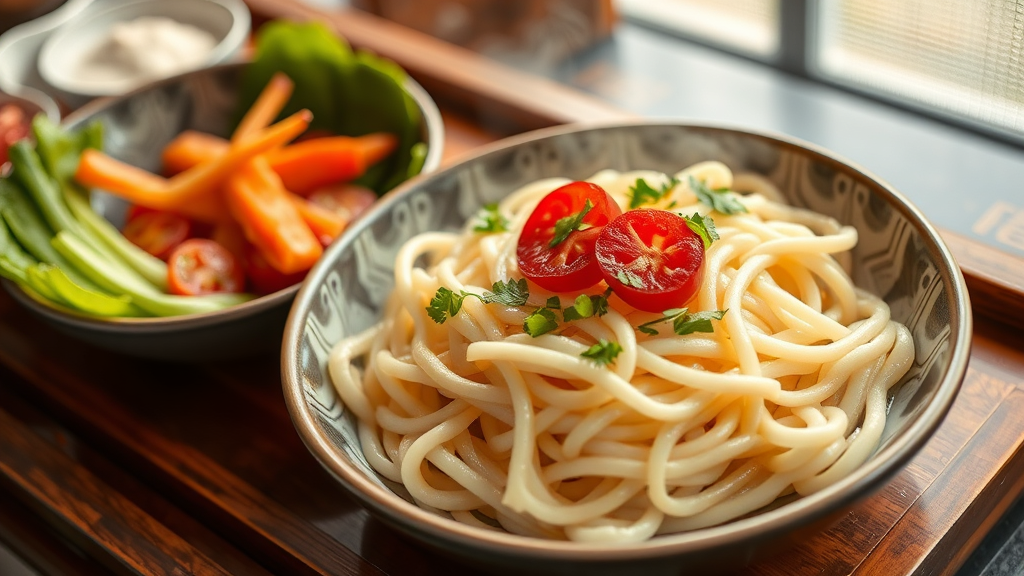

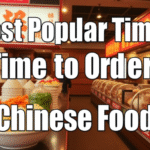
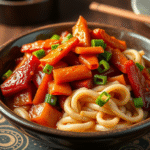
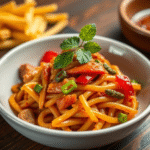
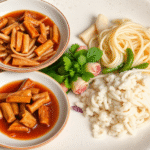
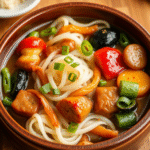
Leave a Reply